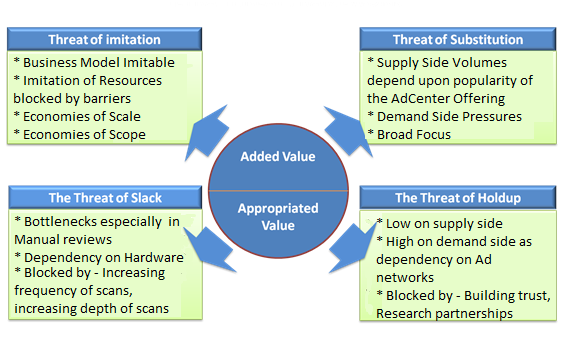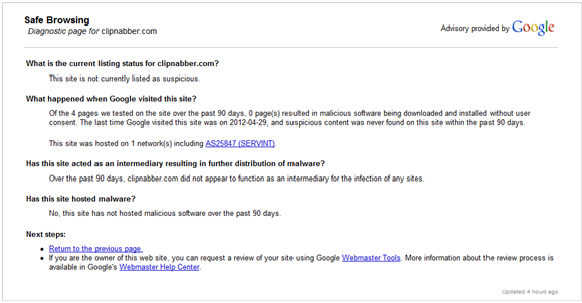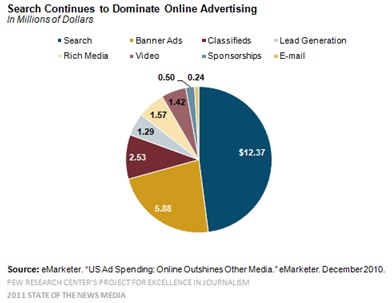SYNOPSIS:
The marketers feel a need for a book that helps them build on their capability to integrate with the internet paradigm. The learning points can act as gap fillers to help them better understand the internet medium and to devise strategies for tapping it. There are many books available which address this subject. I would like to review once such book that is available freely online. The Essential Step By Step Guide to Internet Marketing is a good read written by Internet evangelist Pamela Vaughan and published by HubSpot. HubSpot is a marketing software company located in Massachusetts, US.
The author assumes that the reader has a basic understanding of the marketing field. This includes understanding the marketing mix. The purpose of the book is to give an introduction to how business can integrate the internet into their marketing efforts.
The book begins with discussing the keyword strategy for web advertisers. Keywords are very important for advertisements as they are used by search engines to find whether a particular website is relevant. Advertisers try to match the keywords with the phrases that they assume the potential customers to enter in a search engine like Google and Bing.
A proper keyword strategy is very important for the marketer. If the keyword is relevant to what the customer is searching for, the page containing the advertiser’s item details or the advertisement will be displayed. It is important to note that the advertiser may want the customer to see a particular page when a search query is entered or he may want a certain advertisement to be displayed that matches the search query. The second case is about paid search advertising while the first is the organic search results. The keyword strategy in both the cases is similar.
There are several key things that need to be considered why drafting the keyword strategy. The book also highlights these points. First, the keyword should be relevant to the product being sought for, the theme of the site, the core elements of the company, or the solution that the company or advertiser perceives to provide to the customer. Irrelevant keywords result in high bounce rates, customer dissatisfaction, loss of credibility and anxiety. The marketer should make sure that the keyword policy is taken care of. Keyword research is often employed to find the most relevant keywords. The competitiveness of the keywords chosen by the marketer can be assessed by online tools like Google Keyword Tool or HubSpot.
Secondly, it is important to design the web experience around these keywords and place them in locations that make it easier for web search engines to find them. By using a process called search engine optimization or SEO, the marketers can provide clues to the web designers to put the keywords in specific portions of the web page. Examples can be including the keywords in portions of the webpage like Meta, Head etc. The keywords should small, optimally less than 70 characters long. This helps in readability in web search results, and also is easier for the system to match with user queries. Tools like MarketingGrader assign a score to the website and help to find if it is optimized in the keyword strategy.
It sometimes gives a false belief that having keyword stuffing may help the website to get a higher rank in organic search results or in paid search listings. Web marketers should avoid keyword stuffing, which is having the keywords repeated all over the web page. The search engines are optimized to detect these and they disregard them. Also it is a bad user experience.
The SEO can be improved by having inbound links. Links that are inbound refer to other pages in the same website. Also if several other websites can point to the advertiser’s website, its page rank significantly improves. For example, if a company has a portfolio of products each of which have a website, they can point to each other internally and their page rank improves. Also including the keywords in the website URLs improves its rank significantly.
Business blogging is one area which the web marketers can harness to promote their brands. The blog can be a component of the business website. It adds dynamicity to the web content. The added fresh content can promote higher ranking to the websites. This higher ranking promotes more visitors that can transform into more potential for sale. The blogs can be hosted in popular blogging platforms like WordPress, Drupal etc. The blog post can be linked to the main website via a hyperlink.
Successful blogs have a strong and compelling title linked to the business or the brand. It is well written and formatted. Adding multimedia content like images, video, voice and graphics makes the user experience more enriching and the interaction more fun. Having links in text add authenticity to the web content and also provide a reference point to the reader if they choose to explore more. A call to action button that redirects them to a form or a purchase page is also handy in the blog.
The purpose of blogging in the business world is all about generating leads. These leads can be traced by the sales departments and converted into a sale if possible. To convert website traffic into leads, the following four steps are very important – 1. Selecting what to offer like free materials like eBooks, webinar etc.; 2. Creating call to action buttons. The calls to action buttons are those buttons that provide user some incentives to click them. The incentive can be a free downloadable eBook, a webinar, option to receive newsletter to gain further information or a form for further follow-up. The content of the blog should create interest in the user so that they are more willing to click on the call to action button. 3. Creating the landing pages. This page is where the user lands after click on the call to action button and it should be relevant to it; 4. The final step is to test, measure and iterate the entire process.
Promoting content through social media is also a very lucrative option. Social websites like Facebook, Twitter and LinkedIn provide tremendous opportunities for web marketers to showcase their offerings. For example in Facebook, a company can register to create a profile. A good strategy is to register the profile-name same as the brand name and to upload a profile photo that is the brand logo or a winning product. The company then can use this page to announce new product launches, new promotional campaigns, competitions to involve the users as well as a media to get feedback from the users. This needs to be monitored to avoid any hate comments being spread. The company can allocate resources part time to answer any customer query or concern that comes up on the website.
Monitoring social media is also very important. Google alerts for the products, brand or industry can be delivered directly to the web marketer’s mailbox. HootSuite can help marketers save keywords to find out what is being said about their brands. Social media monitoring tool by HubSpot can create filters so that conversations relevant to the industry be tracked.
Lead nurturing is an important concept where the marketer needs to be constantly in touch with the lead to eventually convert them into customers. They may use a system to pre qualify them as potential customers. Once pre qualified, more targeted emails can be sent to them giving more information about the offering. As the customer lists loose 75% of their entrants in a year, it is very important to update this list periodically with qualified leads. The users that come to the landing page should have an option to enroll themselves to receive further promotional information.
Optimizing promotion for mobile marketing is also often integrated with e-marketing. With the increasing usage of Smartphone, marketers should try to develop mobile friendly versions of the websites. The website can use simple code to determine the medium by which they are being access and then it can choose to display a version of it optimized to the screen size for the device.
This book provides the introductory material for the marketers who aspire to integrate e-marketing into their portfolio. Besides providing the basic knowledge about various avenues for e-marketing exercise, it also provides practical examples and samples from real world implementations. I would highly recommend this material to marketing community.





